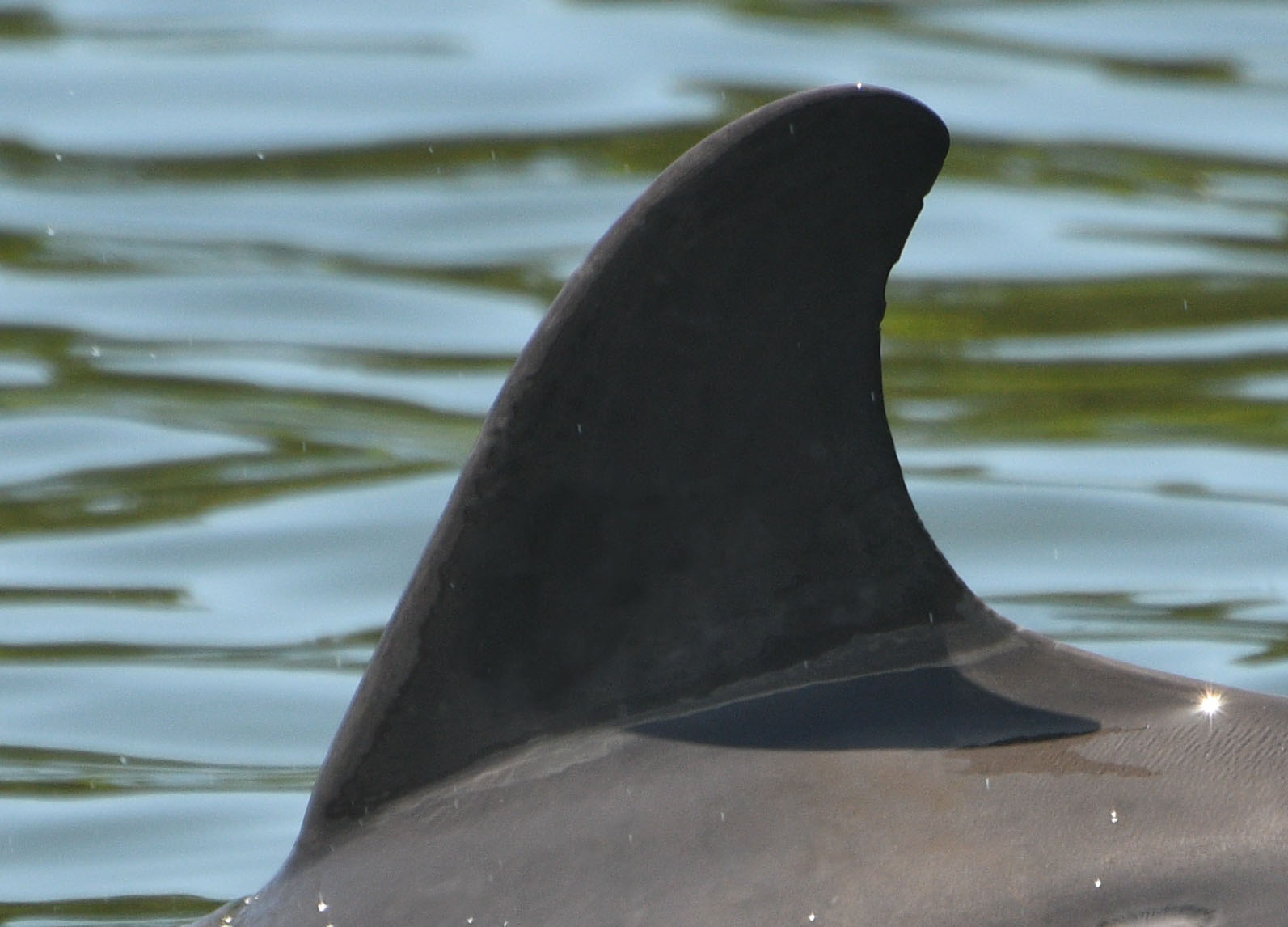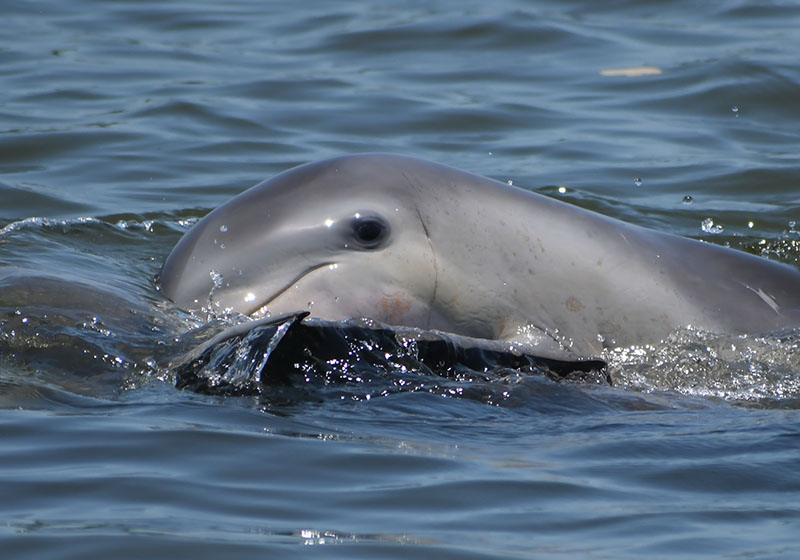Dolphin F295
Stats
Name: F295 (formerly C79A)
Sex: Female
Age: Born 2021

A Dolphin’s Life
We’ve observed F295 more than 50 times since our first sighting of her as a newborn on April 7, 2021. She was the 11th calf of Vespa (dolphin FB79), who was 42 when F295 was born. Vespa died in late August 2022 when F295 was only 17 months old. While orphaned dolphins are not common in the Sarasota Bay community, several have been noted over the past 52 years of the CZS-SDRP. Typically, we don’t see orphaned calves adopted or otherwise assisted by other members of the community and, if they survive, their activity and behavior resembles that of other young individuals when they first leave their mothers.
In May, F295 was one of the dolphins we did a medical check-up on during our health assessments. She has now survived more than a year on her own and appears to be doing very well. During the assessment we captured a recording of her vocalizations.
- Click the audio file below to hear what F295 sounds like!
A Dolphin’s Voice

A Special Note About the Audio Recording
In collaboration with numerous colleagues over the past 35 years, our dolphin communication research team has collected thousands of hours of acoustic recordings from members of the resident Sarasota bottlenose dolphin community, with a focus on individually distinctive signature whistles. Recordings have been made during periodic health assessments, when we are able to obtain high-quality recordings of known individual dolphins. We are currently in the process of systematically assembling a verified signature whistle catalog, with multiple samples from each of the approximately 1,000 unique recording sessions of almost 300 individual dolphins. Members of this collaborative team, and our student researchers, come from Woods Hole Oceanographic Institution, the University of North Carolina Wilmington, University of St. Andrews, and Hampshire College. Learn more about dolphin communication.
In September 2023, one of our Facebook followers, Jared Kaufman, sent us this video of F295 swimming along his seawall. She’s apparently a frequent visitor to his backyard. Using seawalls to help capture prey fish is a fairly common behavior for Sarasota dolphins and it’s good to see F295 engaging in normal feeding patterns. Her mom was known for unnatural feeding behaviors, such as interacting with anglers by stalking boats, bridges and piers and waiting for discarded bait and catch. We know that Vespa passed these behaviors to several of her calves and grandcalves, which has led to their entanglement in fishing line, hooking, ingestion of gear and other sad consequences.
- Click here to learn more about dolphin-safe fishing and keeping wild dolphins wild!
Special note about the video: Jared was able to get so close to F295 because he was taking this video from land. If you’re in your boat or on a jet ski and see dolphins in the wild, please be sure to follow the federal Marine Mammal Protection Act rules and view them from at least 50 yards away — that’s half a football field long.




